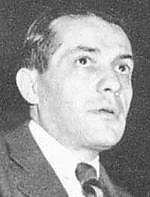The first Democratic primary debate of the 2004 cycle was also at the time the earliest presidential debate. Nine contenders participated: Dean, Edwards, Gephardt, Graham, Kerry, Kucinich, Lieberman, Moseley Braun, and Sharpton. This was the first of 16 debates among the Democratic contenders of the 2003-2004 season. It was also the first campaign event that Sen. Graham had attended, since he had undergone heart surgery.
Background
At the beginning of 2003, Democratic leaders did not foresee a victory in the upcoming presidential election. U.S. troops were moving across Iraq, and they occupied Baghdad on the day of the debate documented here. Democratic leaders wanted to shift the debate to domestic policy, where they felt they had a greater chance of success. The first debate was sponsored by the Children's Defense Fund during its 30th anniversary national conference.
Quick Facts
When: evening of 4/9/2003
Where: Washington DC
Moderator: Judy Woodruff (CNN); panelists: Juan Williams (NPR), Michelle Martin (ABC), Mark Shields (syndicated columnist).
Audience size: unknown
Topics: Foreign and domestic policy
Sponsor: Children's Defense Fund
Transcript: http://www.gwu.edu/~action/2004/dc040903/cdf040903tra.html
Format: 1-minute opening statements, two "lightening" rounds with 30 second answers, two rounds of questions, 1-minute closing statements
Setting: the candidates sat on a stage facing the audience. Behind them were large images of children. The candidates sat in the following order, from the audience's left to right: Sharpton, Lieberman, Kucinich, Kerry, Graham, Gephardt, Edwards, Dean, and Moseley Braun.

Photo of the candidates in the first debate
The Debate
Although the debate was supposed to focus on domestic issues, the fall of Baghdad earlier that day influenced the topics. The moderator explained the complex rules that were developed in an attempt to be fair to all contenders in the limited time available, and in the middle of the explanation, "the audience started giggling" [New York Times, 4/10/2003]. The candidates began with their opening statements, which took up the first 30 minutes. Of the nine, only Graham read an opening statement.
On the topic of the invasion of Iraq, all candidates defended their previous positions - though some who supported the war were concerned about the cost of rebuilding the country. Candidates who continued to oppose the war included Dean, who said of the fall of Hussein "I suppose that's a good thing... But there's going to be a long period when the United States is going to be maintaining Iraq, and that's going to cost this country's taxpayers a lot of money that could be spent on schools..." Dean later pointed out that the eventual cost of the war, $200 billion, was enough to "ensure every child under the age of 18."
Moseley Braun, Graham, Kucinich, and Sharpton agreed with Dean. Moseley Braun cited the initial expenditure of $80 billion for the invasion. "It is an outrage that we are going to pass along a deficit to the next generation based on a war of ... choice and not of necessity..." Graham stated his belief that the attack on Iraq would actually increase the likelihood of a future attack on the United States.
The first candidate to speak in defense of the war was John Edwards. He maintained that the war could continue along with increased domestic spending, "particularly if we get rid of the tax cut for the top 1 or 2 percent of Americans." Kerry agreed, though he did not support the way the war was executed. "This administration is laying out enormous plans for building roads, schools, hospitals, and providing books in Iraq. It's time they lay out a plan to do the same thing here in the United States." Lieberman and Gephardt defended their earlier support for the war.
The candidates used the next time block to outline some of their proposed domestic policies. Of the brief statements, the one the crowd approved of the most was Gephardt's plan to institute universal health insurance, which he said was the centerpiece of his campaign. [New York Times, 4/10/2003; Philadelphia Inquirer, 4/10/2003]
Aftermath
As has usually been the case, the audience was disappointed with the format. The large number of contenders meant that each only had a brief time to make a statement or set forth a policy perspective. Furthermore, the situation was complicated by recent events in Iraq, resulting in a shift of the debate's focus away from domestic policy.
Democratic primary debates of 2004: 2d, 3d, 4th, 5th, 6th, 7th, 8th, 9th, 10th, 11th, 12th, 13th, 14th, 15th, 16th





